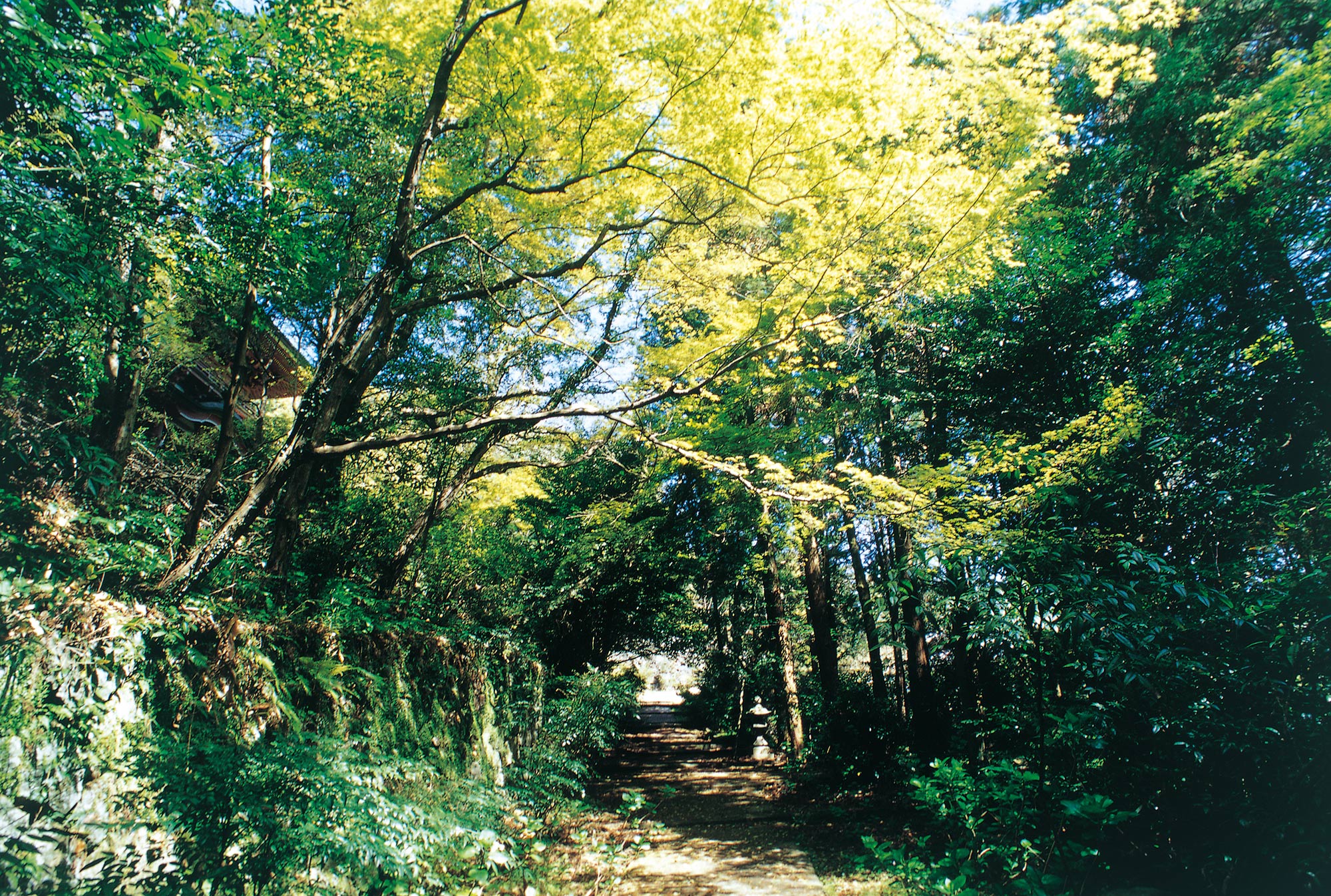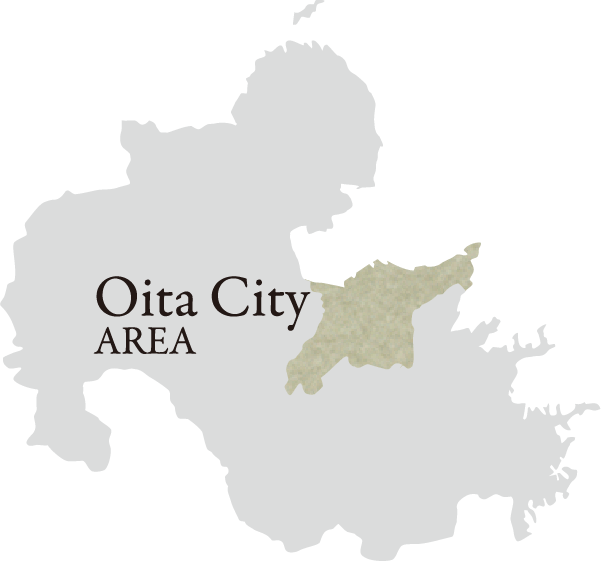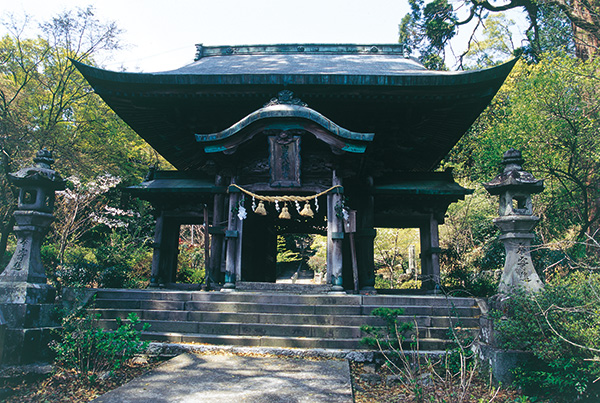

- City of Oita
- Nature
- Shrines・Temples
Yusuhara Forest
Photography/ISHIMATSU Takeo
One Big Life
Yusuhara Forest is a place where all lives come together. Under the tall trees such as the Ichii oak (Quercus gilva) and Japanese bay trees (Machilus thunbergii), which reach about 20 meters in height, there is the Mochi tree (Ilex integra) which doesn’t even go up to half of them, and the young trees of spotted laurel (Aucuba japonica) and Japanese camellia (Camellia japonica) that grow a bit higher than the height of humans, and on the bottom, there are orchid and fern spreading across. Sometimes there will be moss, or even mushrooms. It is a forest full of greens.
It’s not only the plants. Hares, raccoon dogs, and wild boars run around, with various birds singing, and insects walking on your feet. There will be some under the fallen leaves and in the soil. They all help each other, sometimes fight against each other, grow their offspring, then end their lives. Yusuhara Forest is nothing but one big form of life.
A forest with evergreen broadleaf trees is the original image of Southwest Japan. A lot of Oita Prefecture also used to be this way. There are much less now, but a few have survived sporadically. The typical example is the Yusuhara Forest.
If you follow the same type of forest down to the south, you will find the forests of Aya in Miyazaki, Yakushima in Kagoshima, as well as the tropical forest in Taiwan and further through the Ryukyu arc. To the west, you will see the dense perennial forest of Yunnan, China, to the southern foot of the Himalayas in Nepal.
How did the forest about 1,000 to 2,000 years old remain intact in Yusuhara? This is because it is the “Forest of Hachiman.” Yusuhara Hachiman Shrine used to be the largest shrine in Bungo. It boasts nearly 1,200 years of history, and Yusuhara Forest is the sacred territory of the shrine. Just as the forest quite similar to Yusuhara still remains in Usa Hachiman Shrine, people were “forbidden to enter” into the forest.
Or it could also be that the forest was a bit scary for children. Now, there are nature observation workshops held once in a while, where we hear children’s cheers. The forest became a “living classroom” where you can learn about the structure of nature and how it survives.
Now the challenge is how to preserve this precious forest in the future. This all depends on human’s wisdom and effort. Protecting the Yusuhara Forest means protecting the environment of the earth.

Yusuhara Forest and Nandaimon Gate (also known as Higurashimon Gate) located on the approach. The camphor is designated as a natural monument by the government.

